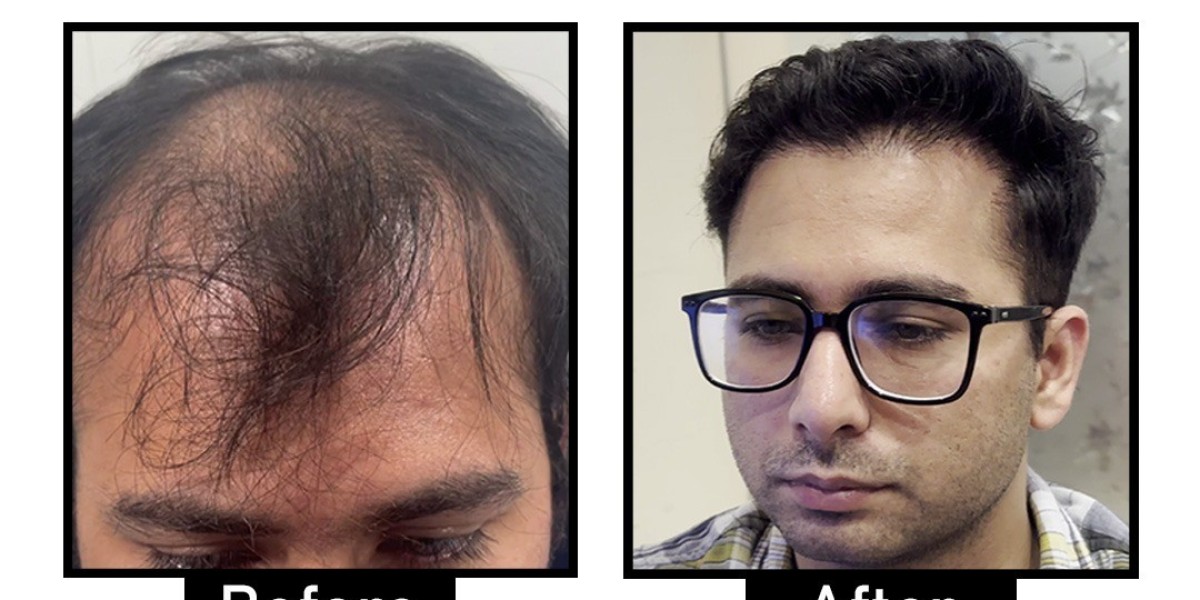One of the highly prevailing problems which occurs to millions of humans worldwide is hair loss. It leads to a serious amount of low self-confidence and reduced confidence. Hair loss can lead to severely affecting a lifestyle when it occurs due to the circumstances of genetic, age factor, hormonal changes, or even pressure. However, with the advancement of time, hair transplant techniques are now effective and permanent techniques for restoring hair growth, thereby enhancing one's feature.
In this very comprehensive guide, we will be talking about various hair transplant procedures, the cost involved in each one, and what to expect from recovery. All these key details are going to help you make the right choice concerning the best treatment for your hair restoration journey!
What is a Hair Transplant?
A hair transplant is a surgical procedure that involves taking hair follicles from a donor area, usually at the back or sides of the scalp, and transplanting them to areas where hair is thinning or balding. The end result is natural, permanent hair growth that blends in with existing hair.
Hair Transplant Techniques
There are many hair transplantation techniques, and each technique is unique with its approach and benefits. The following are the most common techniques:
1. Follicular Unit Extraction (FUE)
Overview: In FUE, individual Hair Transplant follicles are extracted from the donor area using a micro-punch tool and then implanted into the recipient area.
Benefits:
Minimally invasive.
No visible linear scarring.
Faster healing and recovery.
Ideal For: Patients with mild to moderate hair loss.
Drawbacks:
May require multiple sessions for extensive hair loss.
2. Follicular Unit Transplantation (FUT)
Overview: In FUT, a strip of skin is surgically removed from the donor area, and the hair follicles are dissected and placed.
Benefits
More grafts can be transplanted in one session.
Less expensive than FUE
Suitable For: Who have extreme hair loss
Disadvantages
This creates a linear scar on the scalp
Recovery time is slightly longer.
3. Direct Hair Implantation (DHI)
Overview: A modified version of FUE, DHI applies follicles using a specialized pen-like tool directly to the recipient area without the need for prior incisions.
Benefits:
More accurate and denser
Dealing with the graft in a minimally invasive way, which increases survival rates
Ideal For
Patients who aim for high-density hair restoration
Drawbacks
Pricier than FUE and FUT.
4. Robotic Hair Transplantation
Overview: This technique uses robotic technology to assist with follicle extraction and implantation, ensuring greater accuracy.
Benefits:
Minimizes human error.
Consistent and precise results.
Ideal For: Patients seeking advanced technology-driven solutions.
Drawbacks:
Limited availability and higher costs.
Hair Transplant Costs
The cost of hair transplant procedures can vary significantly based on the technique used, the extent of hair loss, and the clinic's location. Below is a breakdown of the average costs in India:
FUE Hair Transplant: ₹30 – ₹60 per graft.
FUT Hair Transplant: ₹25 – ₹50 per graft.
DHI Hair Transplant: ₹50 – ₹100 per graft.
Robotic Hair Transplant: ₹80 – ₹120 per graft.
Total Cost Estimation:
Mild Hair Loss (1000-1500 grafts): ₹40,000 – ₹90,000.
Moderate Hair Loss (2000-3000 grafts): ₹1,00,000 – ₹1,80,000.
Extensive Hair Loss (4000+ grafts): ₹2,00,000 and above.
Factors Affecting Hair Transplant Cost
Number of Grafts: The more grafts required, the higher the cost.
The DHI and robotic transplants tend to be more costly in technique.
Surgeon's Expertise: More experienced surgeons charge a higher premium.
Clinic Location: Clinics located in metropolitan areas cost more.
Post-Procedure Care: Follow-up visits and prescriptions increase the overall cost of the procedure.
Make your text human
The Hair Transplant Procedure – Step by Step
1. Consultation and Planning
The process begins with a consultation to assess hair loss and determine the best technique. The surgeon will design a hairline that complements the patient's facial structure.
2. Preparing for Surgery
Patients are advised to avoid smoking, alcohol, and certain medications before surgery to ensure optimal healing.
3. Donor Area Extraction
Hair follicles are extracted from the donor area using either FUE or FUT techniques.
4. Graft Preparation and Implantation
The extracted follicles are carefully implanted into the recipient area at precise angles to ensure natural hair growth.
Recovery After Hair Transplant
Recovery varies depending on the technique used, but here’s what to expect:
Day 1-3: Mild swelling, redness, and tenderness in the scalp.
Day 4-7: Scabs begin to form around the transplanted area, which should not be disturbed.
Week 2-3: Shedding of transplanted hair is normal and expected.
Month 1-3: New hair growth starts, but it may be thin at first.
Month 6-12: Significant hair growth, with final results becoming visible.
Post-Procedure Care
Avoid direct sunlight: A hat covers the scalp, thus preventing UV rays.
Gentle washing: with a mild shampoo and avoiding extensive scrubbing.
Obey Drugs: Take antibiotics and anti-inflammatory drugs as prescribed.
No Heavy Exercise: No heavy exercises at least for 2 weeks.
Follow up: Regular check-ups help improve healing and hair growth.
Make your text human.
Benefits of Hair Transplant
Permanent Solution to Hair Loss.
Natural Appearance and Seamless Hairline.
Boost in Confidence and Self-Esteem.
Low Maintenance.
Hair transplants are best dermatologist in india for hair restorations. These new advanced techniques will only ensure minimal discomfort and provide natural results. So the right clinic and surgeon can not only restore your hair but your confidence as well. Whatever may be the FUE, FUT, or DHI option you may select, the full costs and recovery will surely guide you to make the right decision.
If you’re ready to transform your hair and regain your youthful look, book a consultation with a trusted hair transplant clinic today!








